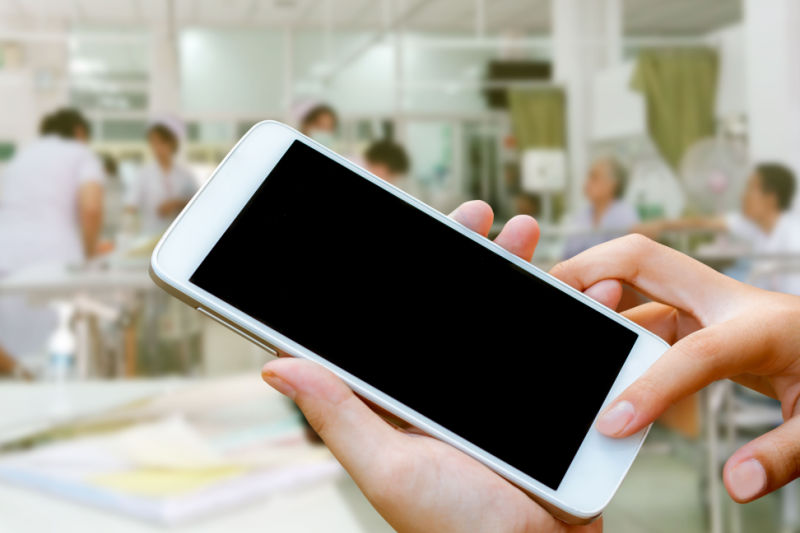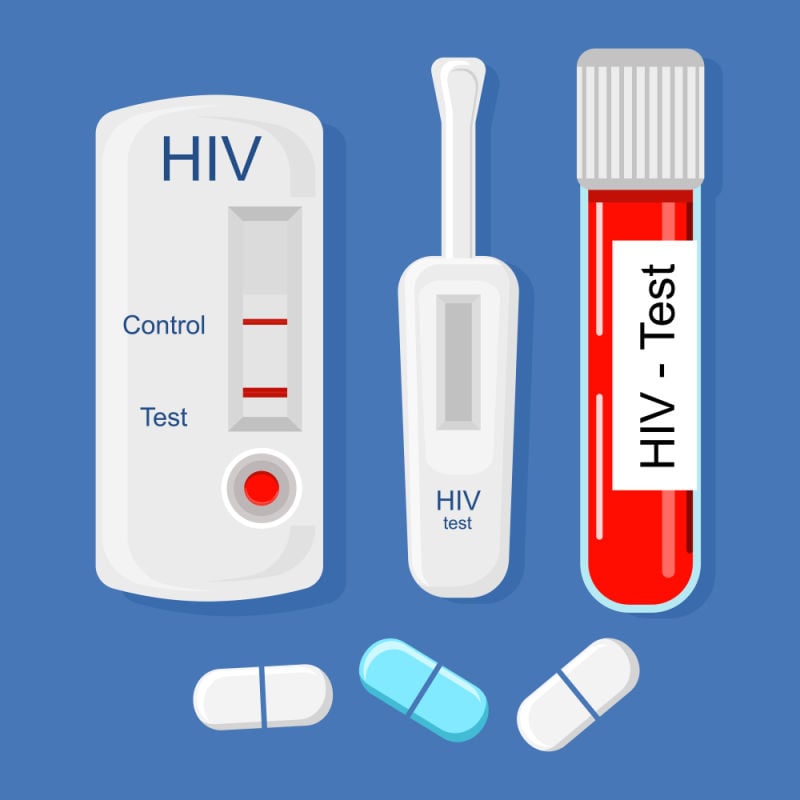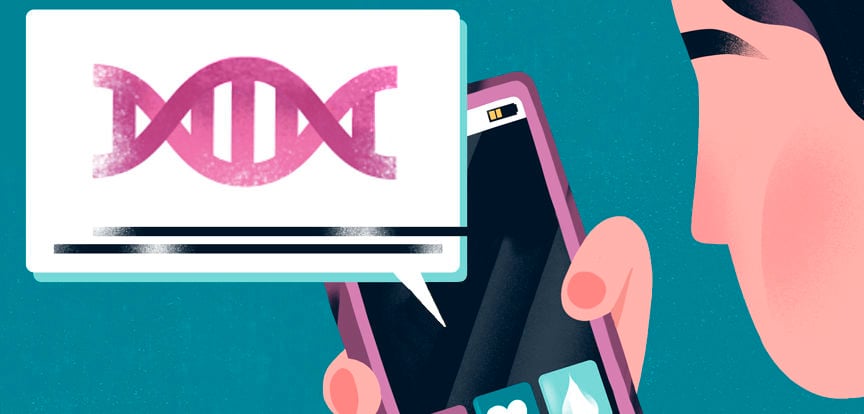The smartphone revolution is providing a promising tool to combat the human immunodeficiency virus (HIV) epidemic. We’ve listed five HIV test apps in development that could help people carry out at-home HIV tests and prevent the spread of the infection.
The COVID-19 pandemic in the last two years has demonstrated how vital rapid diagnostic tests are for containing outbreaks. A wide array of home testing kits for COVID-19 and smartphone apps sprouted to help people test themselves and report results to health authorities.
The growing interest in testing kits and mobile health (mHealth) apps could have a big impact on other infections. For example, HIV continues to lurk in the population, particularly in low- and middle-income countries (LMICs) in sub-Saharan Africa.
The potential of mHealth in fighting HIV
HIV infections are currently incurable for the vast majority of cases. They cause people to lose the ability to fight off infections in the lethal condition acquired immunodeficiency syndrome (AIDS). Ways to fight the epidemic include lifelong antiretroviral drug regimes, regular testing and drugs that prevent infection.
The immediate danger of COVID-19 drew attention away from HIV prevention at the height of the pandemic. This caused many countries to miss their targets of having the vast majority of people with access to testing and sustained antiretroviral treatments as well as living with undetectable levels of HIV in their bodies.
However, the COVID-19 pandemic also provided a silver lining: the growth of digitization in health services. Combined with the soaring use of smartphones in LMICs, this opened the door to HIV/AIDS test apps that could boost the amount of people using at-home HIV tests and knowing whether they are infected. This could therefore slow the spread of the virus in the population.
HIV at-home tests are available
None of this potential would be possible without at-home HIV tests. The only one approved by the U.S. Food and Drug Administration (FDA) is OraQuick, developed by OraSure Technologies, which got the green light in 2012.
In the EU, there are several at-home HIV tests on the market, including OraQuick, Autotest VIH and the INSTI HIV Self-Test.
HIV test apps in development to fight infection
The growth of digital health around the world means that health professionals can deploy a wide range of tools to aid the fight against HIV. Some examples include websites, social media and text messaging.
Many people at risk of HIV are young people who are well-versed in technology. Modern smartphone apps could be a way to reach out to these groups of people and help them to protect themselves from HIV.
Academics around the world are teaming up with software developers to design specialized apps that can help users order and use at-home HIV tests, in addition to a range of other functions. The field is still emerging, but scaling up these projects could help many countries to meet the UN’s HIV testing and prevention targets.
We’ve listed five of these apps in development below.

HealthMindr
This U.S.-focused app is designed to promote HIV prevention among young men who have sex with men. It is being developed in a project led by Emory University in the U.S.
HealthMindr provides information to users about HIV and how they can prevent catching or spreading the infection. It also lets the user order gear for HIV prevention, including condoms and the OraQuick HIV home test.
In addition to reminders to test for HIV, the app lets users fill in a risk assessment of their likelihood of catching HIV. It also lets them search for local resources to find help for their mental health.
In 2020, HealthMindr was deployed in an ongoing U.S. clinical study. According to results from a different study, HIV testing doubled in app users at risk of HIV — evidence that the HIV test app was helping them to prevent the spread of the infection.
HIVSmart!
This project began in Canada almost two decades ago to provide the user with information about HIV, assess their infection risk profile and connect the user with counselors. The app also offers step-by-step tutorials on how to perform and interpret an OraQuick at-home HIV test.
In recent years, the team behind the app have tested its utility in South Africa, where smartphone usage is high but evidence for mHealth’s impact on HIV prevention is still low. They added content in five languages covering Canada and South Africa.
According to a study in South African adults published in 2021, the use of the app and self-testing for HIV in an unsupervised manner was popular with participants. The use of the HIV test app helped healthcare workers get participants who self-tested for HIV on preventative or antiretroviral treatments.
Ithaka
Ithaka is developed in South Africa by researchers at the University of the Witwatersrand, Johannesburg, in collaboration with Aviro Health.
The app is designed to allow users to self-report their HIV home test results without needing to pay for the costs of using the required data on their mobile phones. This can be crucial for people reluctant to use mHealth tools due to the expense of mobile data use.
Ithaka guides users as they test themselves for HIV with the OraQuick test. It helps them comprehend the results and guides them to confirmatory testing in the lab. With the use of gamification, Ithaka is also geared to increase the engagement of users with the app.
In a small study in 2021, researchers tested the usage of Ithaka in a setting away from clinical studies, which is aimed to be more representative of reality than are app studies tied to clinical settings. While just 22.4 percent of the participants reported their HIV self-tests, the authors still saw it as a promising start.
SMARTtest
This HIV test app is the brainchild of a teamup of HIV experts, human behavior specialists and computer scientists at Columbia University in New York.
SMARTtest guides the user when they use the INSTI Multiplex test, which screens for both HIV and syphilis in the blood. The app also helps the user interpret the results: all the user needs to do is snap a picture of the final test. The image is sent to a server for processing, and the app tells the user whether they are negative or positive for HIV and/or syphilis.
In addition, the app helps users search for nearby sexual health clinics with specific parameters such as free or walk-in.
The INSTI Multiplex is currently not available as a self-test, but the developer BioLytical is planning to apply for FDA approval as both a provider-based test and as a home HIV test. In addition, the team is developing the app to be usable with the OraQuick test, and is looking for grants to continue their work in Argentina, South Africa and the U.S. state of Florida.
University College London study app
A team at University College London (UCL) devised this HIV test app to tackle the issue of human errors in using lateral flow tests for HIV, such as the ABON HIV test. These errors can be problematic when working in the field with a range of experience levels.
The team observed that there have been many attempts to automate the reading of HIV tests, but many require the use of a dongle or a portable reader. This can make it costly and complex to use them in impoverished areas.
To solve the issue, the user of the UCL app uses a normal smartphone or tablet to take a photo of the completed test kit. The photo is then uploaded to the app. The software uses artificial intelligence along with a trove of previous test photos to detect automatically whether the test came out positive or negative.
In a study in 2021, the researchers trialed the method in a field pilot study in KwaZulu-Natal, South Africa. According to the study results, the app reduced the number of false positives and false negatives obtained when using the lateral flow HIV tests.
The team focused on HIV to begin with, but they highlighted that the technology could also improve testing in the field for a range of other diseases.

Are at-home HIV tests accurate?
When searching for at-home HIV tests, users should always stick to those that are approved by the FDA, EU or other regulatory bodies around the world. Unapproved tests have no regulatory recognition that they provide accurate results.
However, even approved at-home HIV tests should be treated as a preliminary result. For example, the OraQuick HIV test has around 92 percent sensitivity in detecting HIV when it is present. Therefore, users are always recommended to follow up with a confirmatory lab test for HIV, which usually has more accuracy.





